I was following tutorial and below was the example for auto boxing memory leak.
package com.example.memoryleak;
public class Adder {
public long addIncremental(long l) {
Long sum=0L;
sum =sum+l;
return sum;
}
public static void main(String[] args) {
Adder adder = new Adder();
for(long ;i<1000;i++) {
adder.addIncremental(i);
}
}
}
Now, I could understand that unnecessary objects would be created because of autoboxing but how it caused memory leak, the way I understand is that memory leak is caused when you are holding a strong reference to a dead object. Now, in this case once I have came out of the FOR loop there would be no strong references to those Long objects then how it caused memory leak?
Please note I want to understand how it caused memory leak, I know those objects were unnecessary.
